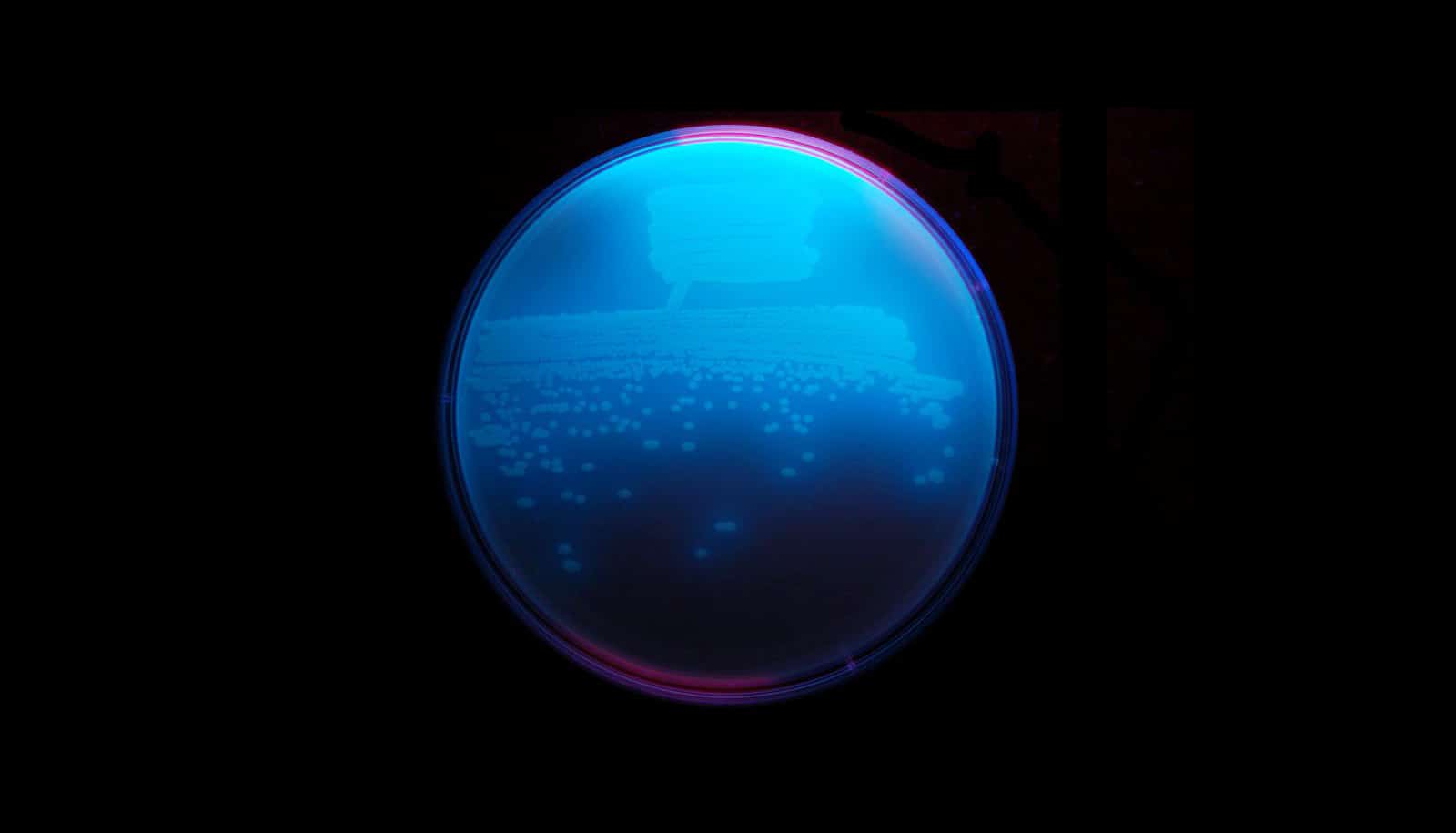New insight about a broad spectrum antibiotic agent, obafluorin, made from a fluorescent strain of soil bacteria might offer a powerful antidote to antibiotic resistance, researchers say.
Understanding how antibiotic scaffolds construct in nature can help prospect for new classes of antibiotics through DNA sequencing and genome mining. Scientists used this knowledge to help solve the X-ray crystal structure of the enzyme that makes obafluorin.
A multi-part enzyme called a nonribosomal peptide synthetase produces the highly reactive beta-lactone ring that is responsible for obafluorin’s antimicrobial activity, researchers say.
“Obafluorin has a novel structure compared to all FDA-approved antibiotics,” says Timothy Wencewicz, assistant professor of chemistry at Washington University in St. Louis. “In the long term, we really need new structural classes of antibiotics that have never been contaminated by clinical resistance from established antibiotic classes.”
Scientists could use these chemicals as next-generation antibiotics for humans, or even to benefit the agriculture sector, Wencewicz notes—as researchers strive to engineer seed treatments and biopesticides to support plant systems capable of making enough food to feed the 9.6 billion people projected to live on this planet by 2050.
Brand new compounds
The new work, published in Nature Communications, provides a useful road map that shows how individual protein domains in the ObiF1 enzyme stitch together in three-dimensional space. An enzyme’s structure is fundamental to almost every function it performs.
“The solution of this structure expands on previous discoveries to provide views of the molecular interactions between catalytic domains in a brand new way,” says Andrew M. Gulick, associate professor in the structural biology department in the Jacobs School of Medicine and Biomedical Sciences at the University at Buffalo.
“This is a brand new class of compounds, and we’ve never had the molecular vision to appreciate how they are produced.”
Scientists originally discovered obafluorin, made from a fluorescent strain of soil bacteria that forms biofilms on plant roots, in 1984, but it wasn’t until 2017 that Wencewicz uncovered the genetic blueprint of the enzyme that makes the molecule’s bio-active components.
That discovery marked the first time that anyone had been able to pin down a beta-lactone forming enzyme from nature, and recreate it in the laboratory.
Like penicillin, obafluorin has a four-membered ring—sometimes called an enchanted ring—that puts strain on bond angles that carbon prefers to adopt. But because a four-member ring is unstable, the molecules are also short-lived and difficult to make.
For example, it took years for chemists to learn how to synthesize penicillin from chemicals and then figure out how fungi make it. This ultimately led to the global production of penicillin by fermentation.
Researchers in the Wencewicz laboratory were able to fast-track the discovery process using genetics to zero in on the biosynthetic machinery that bacteria use to make obafluorin, and then to reconstruct that multi-step, enzyme-catalyzed process in the laboratory.
Obafluorin assembly
For the new work, the researchers mapped the full-length nonribosomal peptide synthetase (NRPS) that makes the bio-active components of obafluorin.
The result is a comprehensive, detailed molecular structure at 3 Angstrom resolution that allows scientists to identify the atoms in the protein chain, see their location and points of contact along the chain, and determine how the pieces assemble to produce useful molecules from start to finish.
“We were able to catch some of the building blocks of the molecules captured inside some of the enzyme-active sites—in the act of doing the chemistry,” Wencewicz says. “This helped us to connect small molecules to the protein, and fill in some of the mechanistic gaps in how the molecules are created.”
This type of view is particularly important for the future goal of creating a chemical library, populated with related beta-lactone compounds that scientists have engineered for beneficial uses.
“We also got a very interesting glimpse at how the domains of the protein actually talk to each other,” Wencewicz says. The crystal structures allowed them to see how key components of the enzyme dock to each other, and how molecules are efficiently moved through the entire NRPS assembly line.
Tiny protein, big job
The research found that one particular component—something called an MbtH-like protein, or MLP, because it was first identified in a related system to produce mycobactin in the bacteria that causes tuberculosis—plays a critical role in facilitating protein-to-protein interactions between catalytic domains.
“Turns out, the (overall) protein suffers largely when you take away this very little protein that provides the critical handshake,” Wencewicz says. “It showed us once and for all that the coordination of these domains is absolutely critical to the function of making antibiotics with this enzyme.”
Taken as a whole, the new paper is unique in its reach, the researchers say, presenting the X-ray crystal structure of the complete obafluorin-synthesizing enzyme ObiF1, probing the molecular mechanism for various key steps in the catalytic cycle, and establishing the conserved residues that enable formation of the reactive beta-lactone ring.
First step in a long process
Finding an antibiotic from a source in nature is only a first step in a long process of drug development, the researchers say. With the structure and techniques reported in the new paper, it is now possible for scientists to quickly and easily create analogs of the natural product in the laboratory—to optimize its molecular properties and bioactivity.
Gulick and Wencewicz plan to continue to apply their knowledge of the obafluorin biosynthetic pathway to discover new beta-lactone natural products using genomic and biochemical approaches.
“Given the structural diversity of known beta-lactone natural products, we believe that novel beta-lactone synthases remain to be discovered,” Wencewicz says.
Additional coauthors are from Washington University in St. Louis, which has filed a US utility patent covering the technology. The Research Corporation for Science Advancement, the Alfred P. Sloan Foundation, and the National Institutes of Health funded the work.



